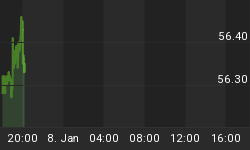6/15/2010 9:11:32 AM
Trade Recommendations:
Take no action.
Daily Trend Indications:

- Positions indicated as Green are Long positions and those indicated as Red are short positions.
- The State of the Market is used to determine how you should trade. A trending market can ignore support and resistance levels and maintain its direction longer than most traders think it will.
- The BIAS is used to determine how aggressive or defensive you should be with a position. If the BIAS is Bullish but the market is in a Trading state, you might enter a short trade to take advantage of a reversal off of resistance. The BIAS tells you to exit that trade on "weaker" signals than you might otherwise trade on as the market is predisposed to move in the direction of BIAS.
- At Risk is generally neutral represented by "-". When it is "Bullish" or "Bearish" it warns of a potential change in the BIAS.
- The Moving Averages are noted as they are important signposts used by the Chartists community in determining the relative health of the markets.
Current ETF positions are:
DIA - Long at $100.46
QQQQ - Long at $45.55
SPY - Long at $108.52
Daily Trading Action
The major index ETFs opened higher and continued that move until a reversal with less than an hour to go in the morning session. That reversal occurred at the 200-Day Moving Averages (DMAs) for the Dow and S&P-500. The move lower saw the bulls mount a rally attempt with less than two hours left in the session but the bears defeated that attempt will less than forty-five minutes remaining in the session and the close was at/near the lows with the Dow and S&P-500 closing in negative territory and the NASDAQ-100 essentially flat. The Russell-2000 (IWM 65.35 +0.41) mimicked the major indexes as did the Semiconductor Index (SOX 351.97 +2.44) but both were able to close above Friday's level. The Bank Index (KBE 24.13 -0.17) lost three quarters of one percent while the Regional Bank Index (KRE 24.31 -0.06) lost a quarter of one percent. All equity indexes we regularly monitor are now in trading states with only the Dow and S&P-500 below their 200-Day Moving Averages (DMAs). USD, which we use to trade the Semiconductor Index, is hovering just below the 200-DMA but the Semiconductor Index itself has surpassed that level. The 20+ Yr Bonds (TLT 96.91 -0.50) fell with equities as uncertainty remains for bond investors.
There were no economic reports of interest released. Instead, the markets relied on important resistance levels to halt the advance that began with the higher open. The bears took charge at those levels and hurled the bulls back on themselves.
Moody's downgraded Greece's debt from A3 to Ba1 and this headline did cuase some weakness in the Euro, but this news had been expected by market participants. Greece's Prime Minister Papandreou, before the weekend, indicated that Greece would not leave the euro and would pay its dues and return to growth.
BP Plc (BP 30.67 -3.30) sold off heavily. The latest concerns are the continued political pressure Barach Obama is applying to have BP place funds in escrow to pay for damages due to the continuing Gulf spill. Analysts remain skeptical BP will be able to maintain its dividend.
Four out of ten economic sectors in the S&P-500 moved higher led by Utilities (+0.4%) and Consumer Staples (+0.4%). Declining sectors were led by Materials (-1.0%) and Financials (-0.7%).
Implied Volatility was mixed with the S&P-500 (VIX 28.58 -0.21) implied volatility falling fractionally and the implied volatility for the NASDAQ-100 (VXN 28.94 +0.14) rising fractionally.
Commentary:
Monday's session saw continued light volume as market participants gird for a crossing of the 200-DMA by the Dow and S&P-500. With the leading indexes (NASDAQ-100, Russell-2000, and Semiconductor Index) having already crossed their respective 200-DMAs, it is the commitment (or lack thereof) of the broad market indexes that will chart the course of the next major move. Those levels are 11,310 for the Dow and 1,108 for the S&P-500. Monday's closes were at 10,190.89 and 1,089.63 respectively.
While it is by no means certain that the bulls will be able to force a close above the 200-DMAs, there have been three attempts thus far. The odds favor the bulls now in that the bears have become weaker on each successive attempt to defend this crossing. For now, we are staying with our long positions, at least until they rally into resistance.
It should be noted that this coming Friday is a quarterly derivatives expiration day known as quadruple witching. On Friday, single stock futures, stock index futures, stock index options, and stock options will expire. This generally leads to higher volume on that Friday as well as added volatility for the week. In addition to this, it should be noted that the Russell-3000 will be rebalanced the following Friday, June 25th. More than 460 companies will be swapped into and out of the Russell-3000 universe. This will affect trading for the coming two weeks and will result in one of the heaviest trading volume days of the year on Friday, June 25th.
We hope you have enjoyed this edition of the McMillan portfolio. You may send comments to mark@stockbarometer.com.
















